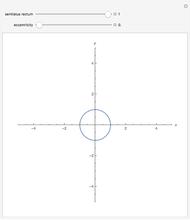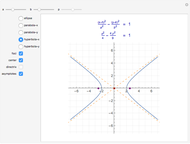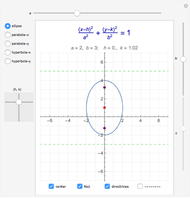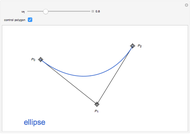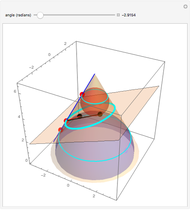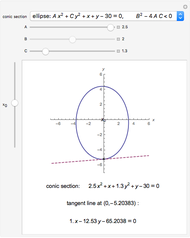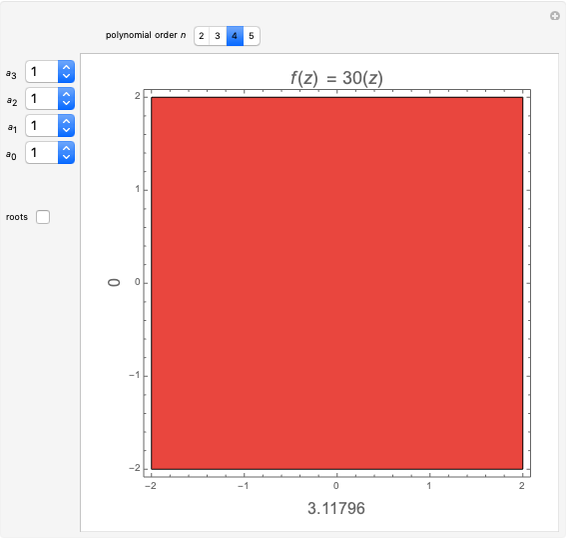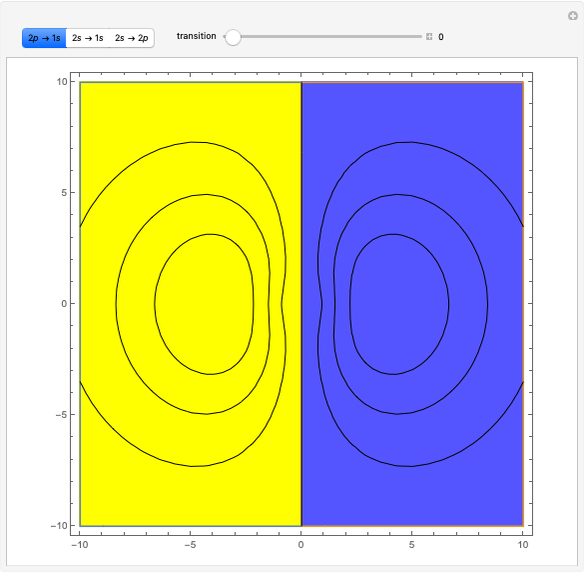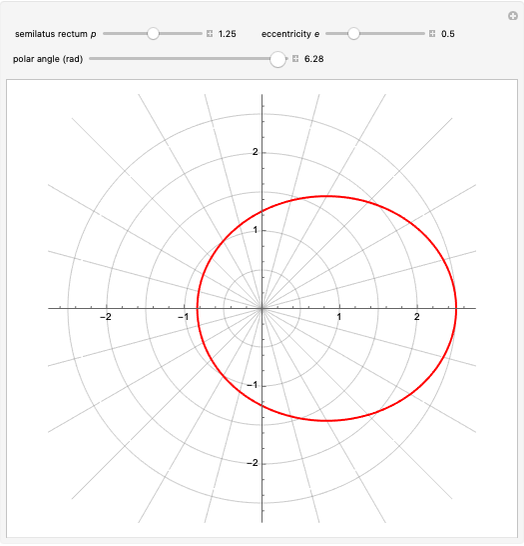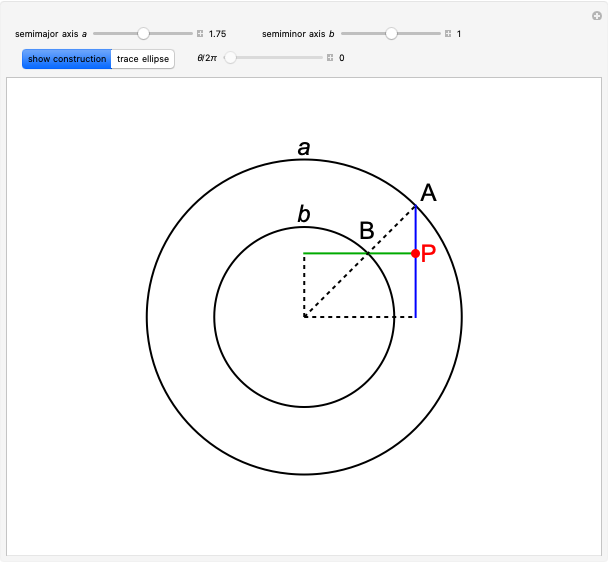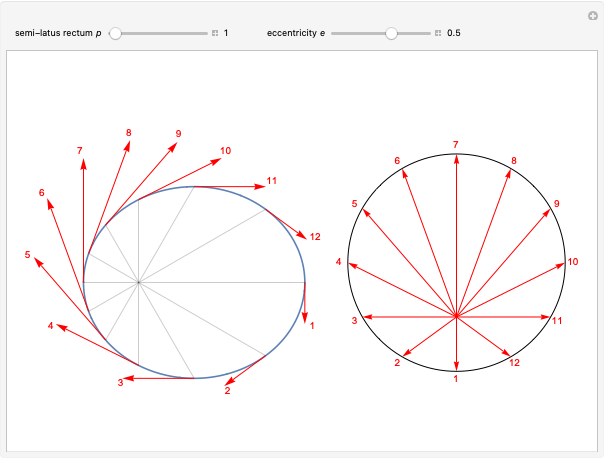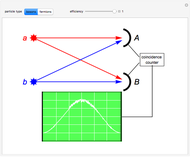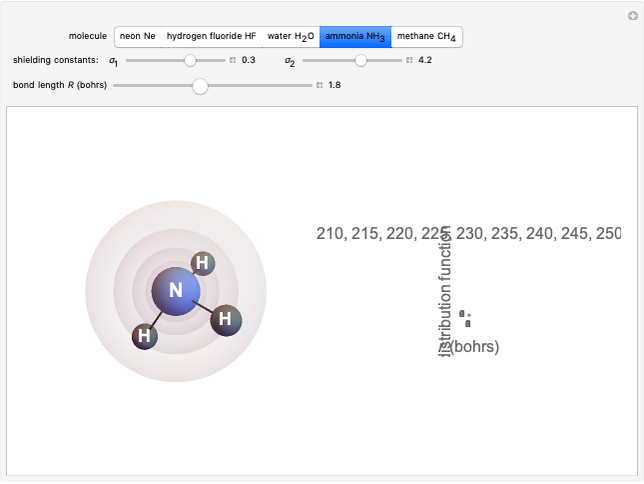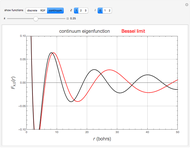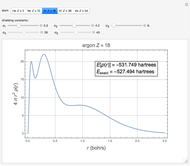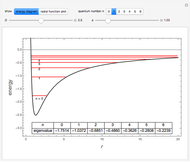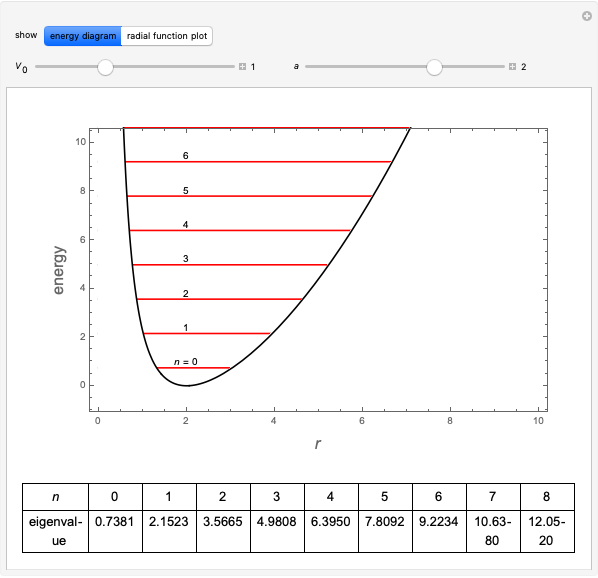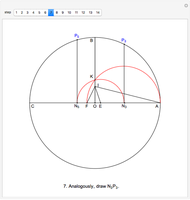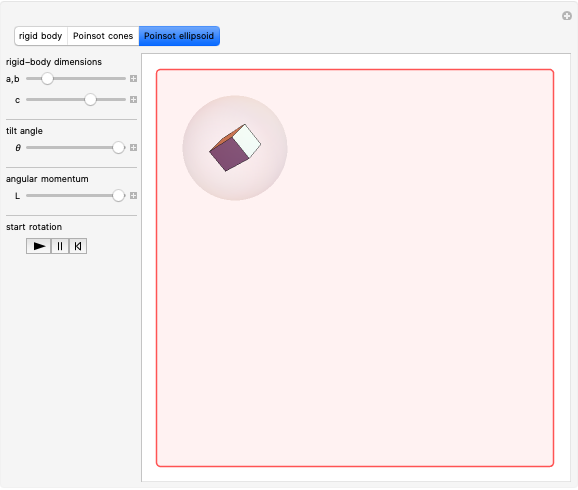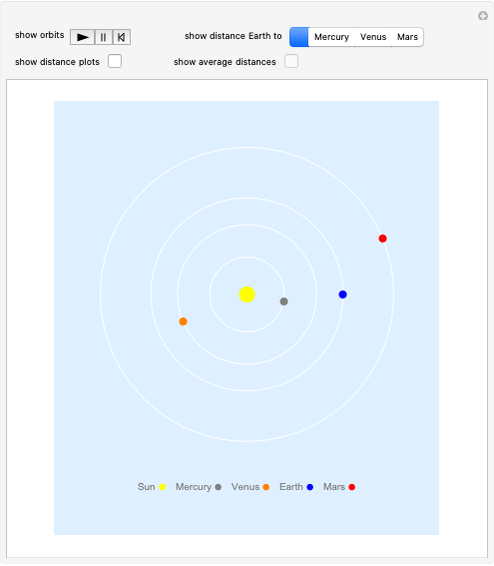Polar Plots of Conic Sections

Requires a Wolfram Notebook System
Interact on desktop, mobile and cloud with the free Wolfram Player or other Wolfram Language products.
Conic sections (the circle, ellipse, parabola and hyperbola) can all be represented by an equation in polar coordinates:
[more]
Contributed by: S. M. Blinder (November 2019)
Open content licensed under CC BY-NC-SA
Details
A more general form for the polar equation is
 ,
,
where one focus is at the left-hand side of the conic for the minus sign (which we have used) but on the right-hand side of the conic for the plus sign. The alternative form

rotates the conics by 90°, with the semimajor axis oriented vertically.
The following illustration shows the derivation of the formula for the case of a parabola ( ), with the focus at
), with the focus at  and the directrix (the vertical line) on the left.
and the directrix (the vertical line) on the left.
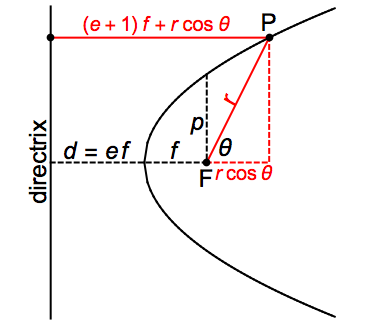
At every point  on the curve, the defining relation is
on the curve, the defining relation is
 or
or  .
.
The semilatus rectum  is equal to
is equal to  when
when  . We obtain thereby
. We obtain thereby
 .
.
Snapshots
Permanent Citation



















